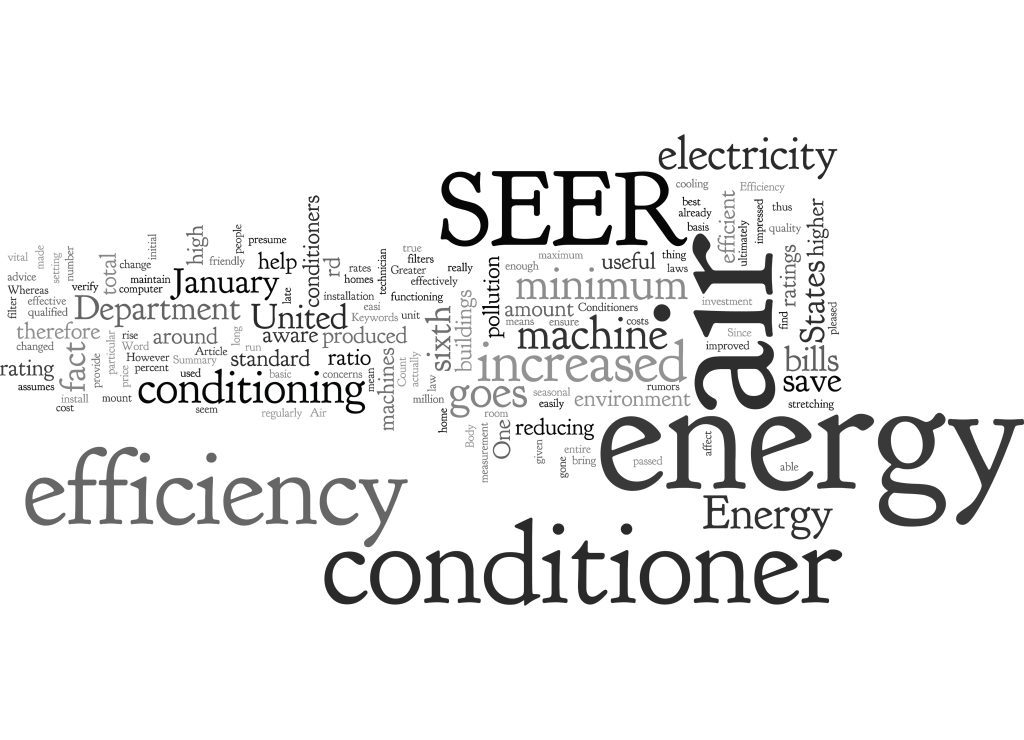SEER Ratings Explained: How They Impact Your HVAC System’s Efficiency and Your Energy Bills

Understanding SEER Ratings: What They Mean for Your HVAC Efficiency
When it comes to selecting a new air conditioning system or understanding how your current HVAC system is performing, SEER ratings play a crucial role in determining its efficiency. If you've ever wondered what the term SEER means or how it impacts your energy bills, you’re not alone. In this blog, we’ll break down what SEER ratings are, how they affect your HVAC efficiency, and why they matter to homeowners seeking energy savings and environmental benefits.
What is SEER?
SEER stands for Seasonal Energy Efficiency Ratio. It is a measurement used to quantify the cooling efficiency of an air conditioning system or heat pump. Specifically, SEER represents the ratio of the cooling output (in BTUs) to the energy consumed (in watt-hours) during a typical cooling season. In simpler terms, it measures how efficiently an HVAC system uses energy to cool your home over the course of a season.
A higher SEER rating means the unit uses less energy to produce the same amount of cooling. This results in lower energy bills and less environmental impact, making SEER a key consideration when choosing an HVAC system.
How is SEER Calculated?
SEER is calculated by dividing the total cooling output of an air conditioner or heat pump during a cooling season (measured in BTUs) by the total amount of energy consumed (measured in watt-hours) during the same period. The formula looks like this:

This ratio is designed to represent an average performance over a cooling season, so factors like outdoor temperature fluctuations, humidity, and system usage all come into play.
SEER Ratings and HVAC Efficiency
Now that we understand the basics, let’s explore how SEER ratings relate to HVAC efficiency and why they matter.
-
Higher SEER = Better Efficiency The most important takeaway is that the higher the SEER rating, the more efficient the system is. Modern air conditioners and heat pumps are available with SEER ratings ranging from 13 to over 20. Older models typically have SEER ratings closer to 8-10, meaning they consume much more energy to produce the same amount of cooling.
-
Energy Savings A higher SEER rating directly translates to lower energy consumption. For instance, a system with a SEER of 16 will use significantly less energy to cool your home than one with a SEER of 12. Although systems with higher SEER ratings may have a higher upfront cost, the long-term energy savings can offset the initial investment.
To put it into perspective, upgrading from an air conditioner with a SEER of 10 to one with a SEER of 16 could reduce your cooling energy consumption by up to 30-40%, depending on the specifics of your system and usage.
-
Environmental Impact Lower energy consumption not only results in reduced utility bills but also contributes to a smaller environmental footprint. Using less energy reduces the demand on power plants, which in turn lowers greenhouse gas emissions and helps mitigate climate change. Choosing an HVAC system with a high SEER rating is an effective way to reduce your home's environmental impact.
-
System Longevity In addition to efficiency, a high-SEER system may also last longer. Systems that operate more efficiently tend to experience less wear and tear, as they’re not running at full capacity as often as lower-SEER models. This means fewer repairs and a longer lifespan for your HVAC system.
SEER Ratings and HVAC Regulations
It’s also important to note that SEER ratings are regulated by the U.S. Department of Energy (DOE). As of 2023, the minimum SEER rating for new central air conditioners in the U.S. is 14 in northern states and 15 in southern states, where cooling needs are greater. These regulations are designed to promote energy-efficient systems and reduce the overall energy consumption of HVAC systems nationwide.
Keep in mind that if you have an existing HVAC system that’s not meeting minimum efficiency standards, it may be time for an upgrade. Replacing an old, inefficient unit with one that meets or exceeds current SEER requirements can help you take advantage of better efficiency and lower operating costs.
SEER vs. EER vs. HSPF: What’s the Difference?
While SEER is the most common rating used for cooling efficiency, there are other performance metrics that are important to understand when selecting HVAC systems:
-
EER (Energy Efficiency Ratio): EER is a similar measure to SEER but is used to rate the efficiency of an air conditioner under specific, consistent conditions (such as a fixed outdoor temperature of 95°F). SEER is a seasonal average, while EER reflects a more consistent, real-time efficiency.
-
HSPF (Heating Seasonal Performance Factor): For heat pumps, HSPF measures the efficiency of heating mode. Like SEER for cooling, a higher HSPF rating means better heating efficiency.
Each of these metrics provides a different perspective on HVAC system performance, but SEER remains the primary metric for cooling efficiency.
Conclusion
Understanding SEER ratings is essential for homeowners looking to make informed decisions about their HVAC systems. A higher SEER rating signifies greater energy efficiency, which can lead to substantial savings on your utility bills, lower environmental impact, and improved comfort in your home. While upfront costs may be higher for high-SEER systems, the long-term benefits in terms of savings and efficiency can make it a worthwhile investment.
When considering a new HVAC system, evaluate your climate, usage patterns, and budget to determine the best SEER rating for your needs. And always remember that selecting a high-SEER unit isn’t just a smart financial decision—it’s an eco-friendly choice that benefits the planet as well.